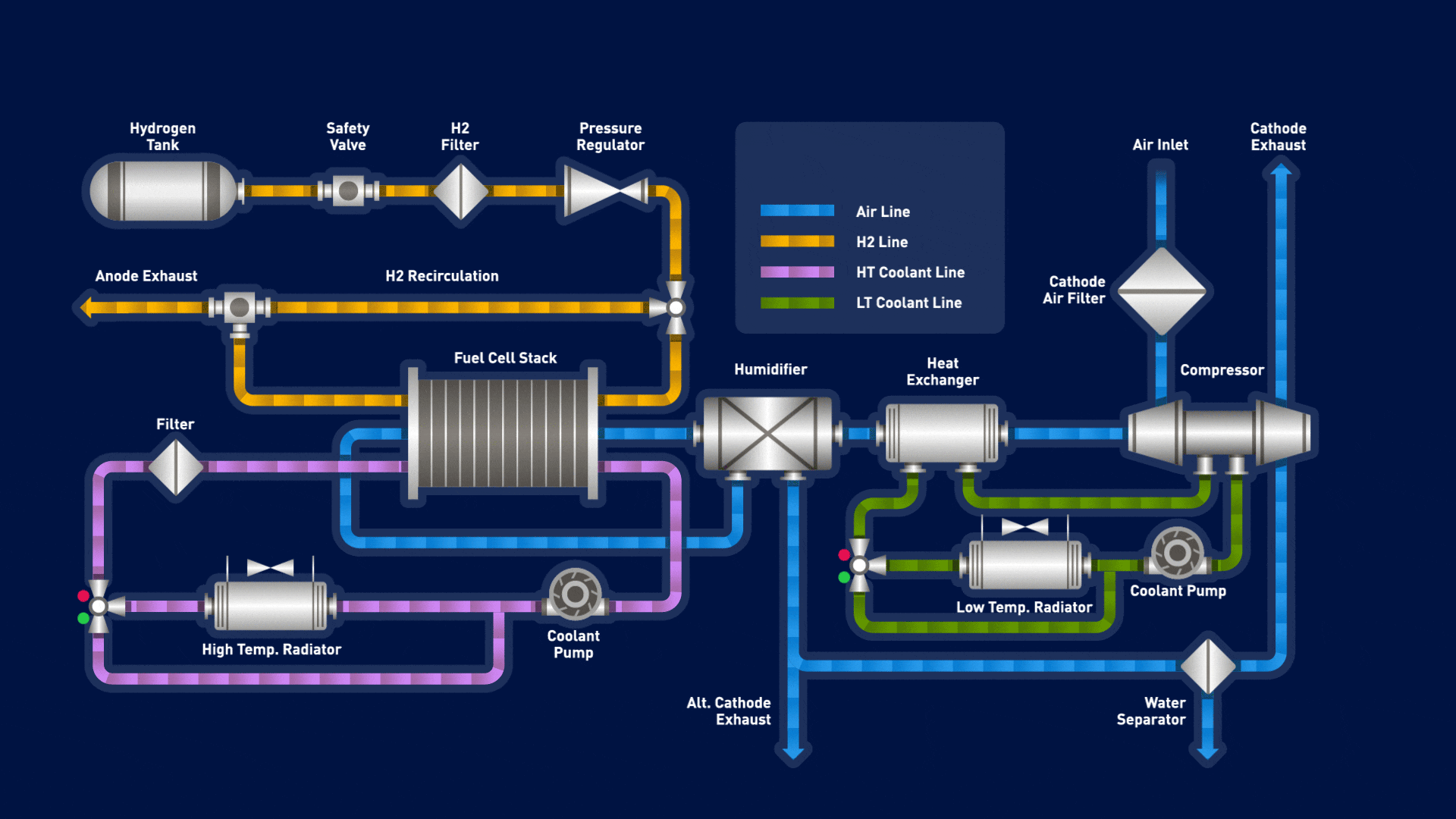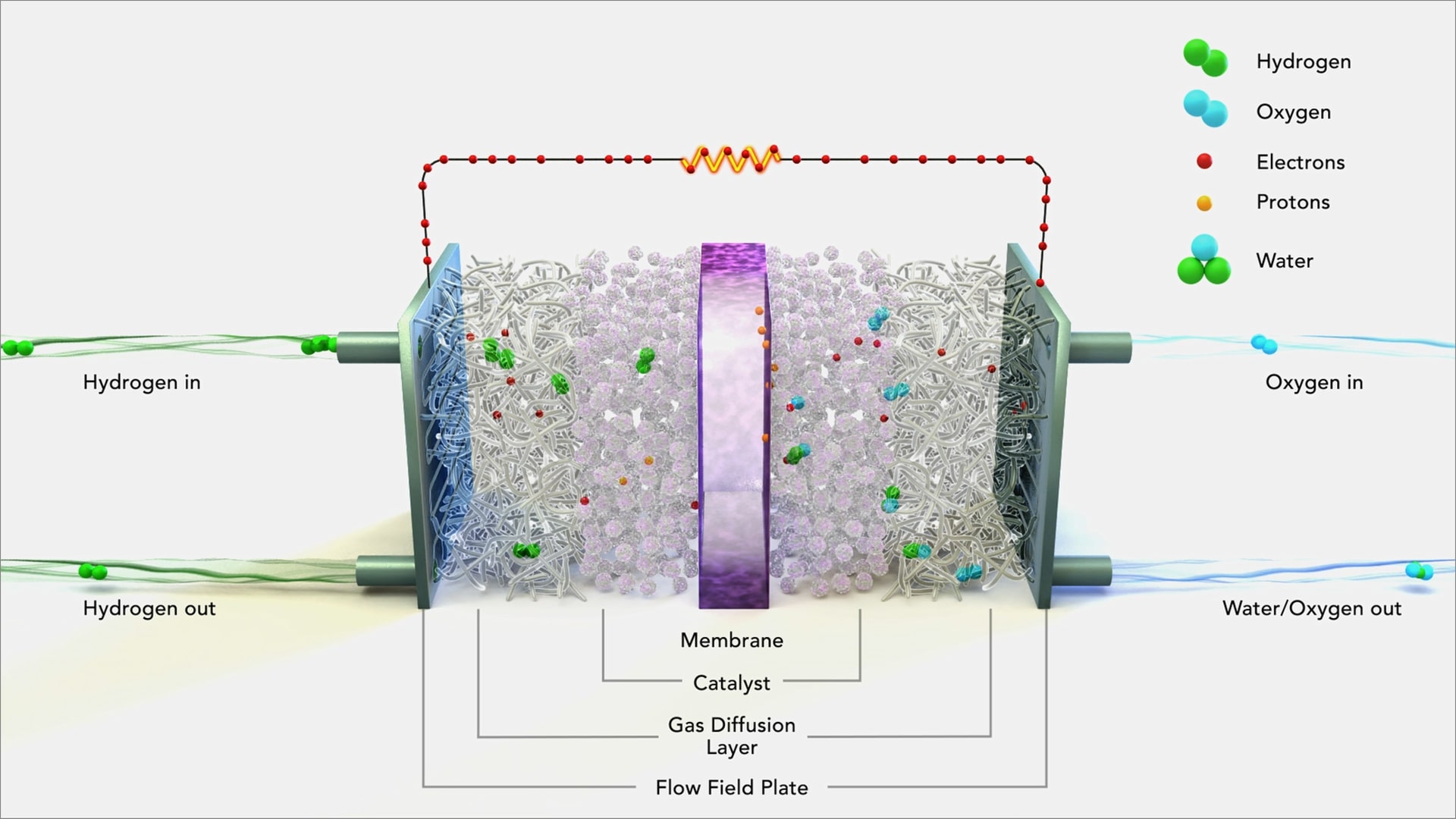

Proton Exchange Membrane Fuel Cell (PEM)
The PEM Fuel Cell generates electricity from hydrogen and oxygen through a chemical reaction. It is considered a zero-emission technology since the only byproducts are water and heat. Due to it’s high power density, low running temperatures and pressures and quick start-up time the PEM Fuel Cell is an ideal solution for on and off highway applications.

Phosphoric Acid Fuel Cell (PAFC)
Phosphoric Acid Fuel Cells (PAFC) utilize liquid phosphoric acid as an electrolyte to produce electricity from hydrogen, offering robust performance and long operational life. Although bulkier and less power-dense than PEM fuel cells, PAFCs are well-suited for larger mobile machinery and stationary power applications due to their higher tolerance to fuel impurities and reliable efficiency.

Solid Oxide Fuel Cell (SOFC)
Solid Oxide Fuel Cells (SOFC) operate at high temperatures using a ceramic electrolyte to convert a variety of fuels into electricity with high efficiency and fuel flexibility. Their suitability for electric trucks, buses, and mobile machinery lies in their potential for high electrical efficiency and the ability to utilize alternative fuels like natural gas, although their long startup times and thermal management needs pose practical challenges for on-the-go applications.





Humidifier for Hydrogen Fuel Cells

Hydrogen Filter for Hydrogen Fuel Cells

Seals for Bipolar Plates

Tolerance Compensation Seals (Warp Seals)

Fuel Cell Stack Cooler

High-Pressure Hydrogen Hose Assemblies

O-Lok Fittings

Pressure Sensor


Insights into Hydrogen Fuel Systems on Trucks & Buses
WEBINAR
Unlock the potential of hydrogen fuel cell systems and explore their pivotal role in sustainable transportation. Gain insights into the advantages of hydrogen over electric alternatives, understand the mechanics and environmental impacts of hydrogen ICE versus FCEVs, and discover essential components for safe and efficient hydrogen distribution.

How to Maximise Your Fuel Cell’s Performance and Durability
ARTICLE
Optimizing fuel cell performance is crucial for advancing hydrogen technologies. Discover how fuel cells contribute to carbon neutrality and gain actionable insights on enhancing efficiency and longevity. Explore practical tips and Parker’s innovative solutions to drive your projects forward.

Hydrogen Fuel Systems Create Unique Concerns
WHITE PAPER
Discover how to overcome the unique challenges of hydrogen fuel systems. This essential guide provides practical tips for minimizing leaks, safe handling practices, and insights into the latest advancements making hydrogen a viable option today.


